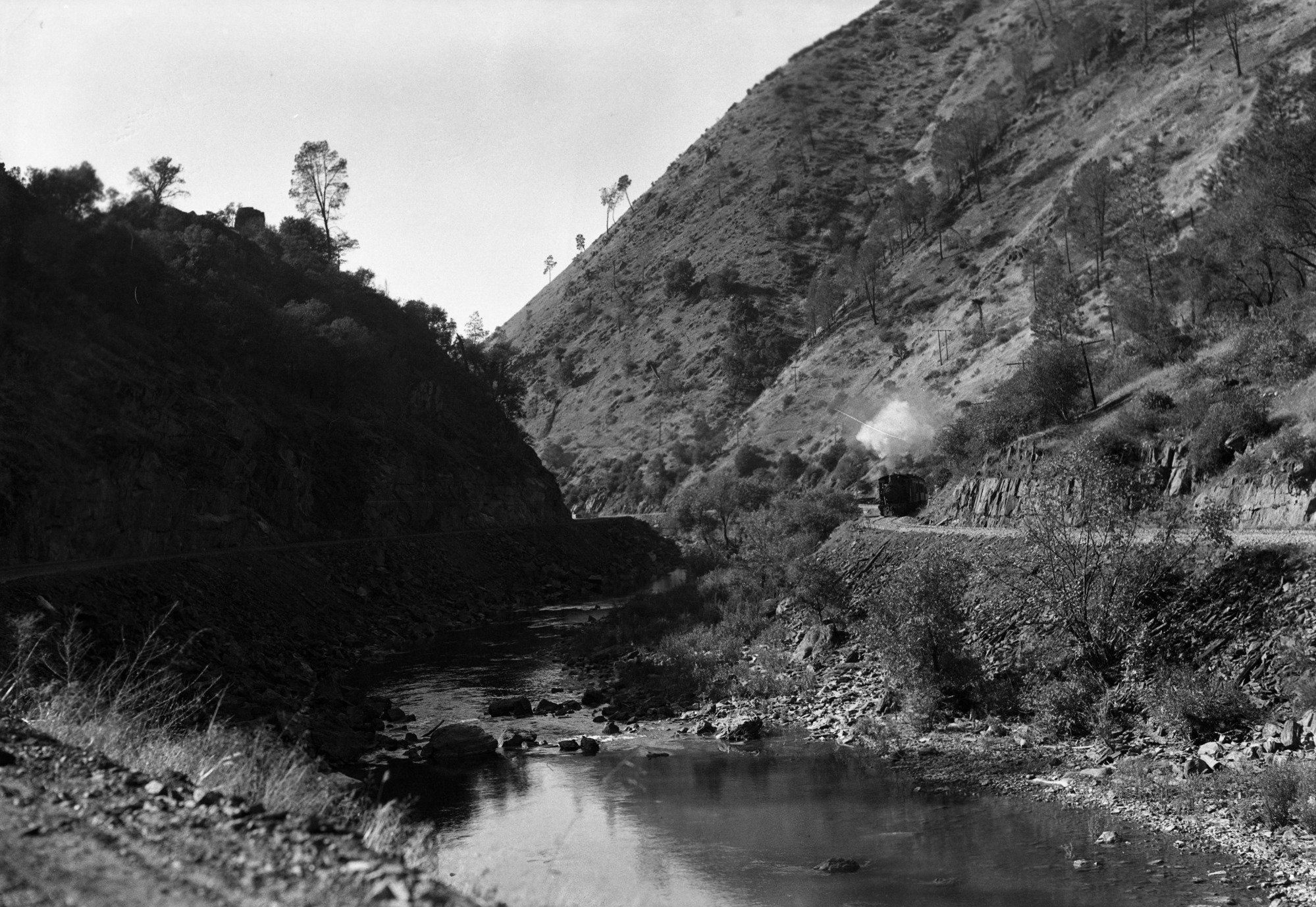Cultural Values
The continuum of human use along the Merced River and South Fork Merced River encompasses millennia of diverse peoples, cultures, and uses.
American Indian and late 19th-century American cultures flourished along these rivers because they provided reliable, year-round water in extraordinary settings. Evidence that reflects trade, travel, and settlement patterns abounds in an intricate and interconnected landscape of archeological sites representing this cultural history. The ongoing cultural traditions of contemporary American Indian and other ethnic heritages are linked through space and time to their respective prehistoric and historic pasts via these ethnographic and cultural landscapes. Therefore, this landscape holds outstandingly remarkable scientific, interpretive, and cultural value for traditionally associated peoples and the public.
Cultural Values in Yosemite Valley
The Merced River has sustained human life, both through its waters and the biodiversity it sustains, in times past and present. Archeological sites and ongoing cultural attachments indicate a long, treasured, and regionally or nationally rare connection to and dependence on this river.
Suzie and Sadie McGowan (Mono Lake Paiute) in Yosemite Valley CA. 1901 by J.T. Boysen. Photo courtesy of Yosemite National Park.
-
Traditionally associated American Indian tribes and groups associate strong cultural and spiritual values with the river and Yosemite Valley. These values are reflected in the abundance of names and stories attached to geologic and other significant features in the Merced River corridor. The ethnographic resources here include river-related and traditionally-used plant species and the village sites of Wahhoga and Ahwahnee. These American Indian communities maintain their cultural connections to the area through ongoing traditional cultural practices and important religious ceremonies that continue to be conducted here, as they have for thousands of years.
-
Drawn by Yosemite’s year-round availability of water and diversity of edible plants, people have inhabited the Valley for thousands of years, leaving behind an exemplary collection of sites in the Yosemite Valley Archeological District. Many of these pre- contact and historic-era archeological sites are identified in ethnographic literature and native oral traditions, providing a rare example of the long and continuing association of people and places. While the landscape itself provides exemplary documentation of land use practices, many of the individual sites contain exceptional information with the potential to interpret not only ancient lifeways but also cultural change at the period of contact with the outside world. In addition to their regionally—and potentially nationally—significant scientific and interpretivevalue, the sites have value to American Indian tribes and groups as a connection to their ancestors.
Cultural Values in El Portal
-
El Portal’s location midway between Yosemite Valley and the San Joaquin Valley made it an important place of settlement, subsistence, and trade along the Merced River. The steep, narrow canyon at El Portal includes river terraces with level lands on which villages were built. The presence of Great Basin and Pacific Coast artifacts indicates that El Portal was a location of continuous, far-reaching traffic and trade. The El Portal Archeological District contains dense concentrations of resources representing some of the oldest deposits in the Sierra foothills, with data important to interpreting regional cultural history possibly as old as 9,500 years. Particularly significant is the Johnny Wilson Ranch, a rare example of an American Indian homestead, which took advantage of the river as an irrigation source. In addition to the regionally significant scientific and interpretive value of the archeological district, the sites have value to park-associated American Indian tribes and groups as a connection to their ancestors. These groups maintain their traditional cultural practices and religious ceremonies as they have for thousands of years.
Cultural Values in South Fork Merced River
-
The South Fork Merced River above Wawona presented seasonal trade, travel, and subsistence opportunities for American Indian people. This segment shelters regionally rare prehistoric archeological sites containing substantial rock-ring features with wooden remains. These river-adjacent sites represent a settlement or land use pattern that is directly tied to the river as a water source, a wildlife corridor, or other strategic purpose. These resources hold regionally important data potential about subsistence and settlement during the summer months in the high country.
Cultural Values in the South Fork Merced and Wawona: Flowing through a broad basin, the South Fork Merced provided the water and location necessary for human settlements, both prehistoric and historic. As with Yosemite Valley, there are several Cultural ORVs in this area.
-
Physical remnants of the African-American Buffalo Soldiers’ federal protection of Yosemite National Park during the late 19th and early 20th centuries are present along the South Fork Merced River in Wawona. The South Fork served as a year-round water source for Camp A.E. Wood, the first Army headquarters in the park. These archeological remains provide evidence of the extremely rare African-American guardianship of national park lands.
-
Built in 1868 by Galen Clark (Yosemite pioneer and park guardian), the Wawona Covered Bridge boasts state significance within transportation, entertainment, and recreation contexts. The bridge embodies a unique type of construction and is the only historic covered bridge in the NPS western region.
-
Sites of human activity reaching back thousands of years are concentrated along the river. The presence of Great Basin and Pacific Coast artifacts indicates that Wawona was a location of continuous, far- reaching traffic and trade. Sites in this district contain important research information relevant to permanent and semi-permanent settlement along a particularly long, mid-elevation meandering river. In addition to the regionally significant scientific and interpretive value of the archeological district, the sites have value to park-associated American Indian tribes and groups as a connection to their ancestors. These groups retain the rights to practice their religion and ceremonies.
U.S. Forest Service Cultural Values
Yosemite Valley Railroad along the Merced River. Copied 1991 or 1992 (Yosemite National Park Digital Archives)
Cultural values: The old Yosemite railroad and old mining sites contribute to the outstandingly remarkable value for the cultural historical resources.






